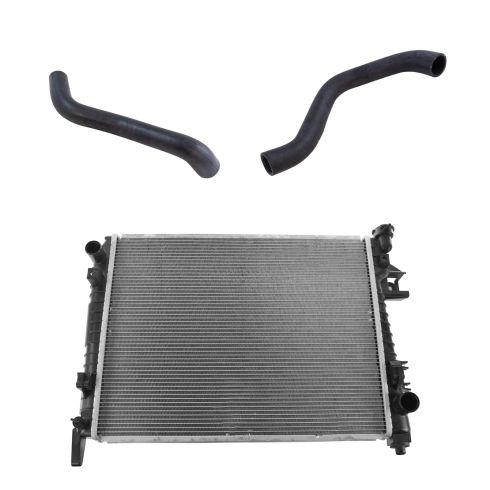1AHCK00026-2004-08 Dodge Ram 1500 2500 3500 Radiator 3 Piece Set DIY Solutions HVA01102

Replaces
2005 Dodge Ram 1500 Truck V8 5.7L Radiator 3 Piece Set DIY Solutions HVA01102

Product Reviews
Loading reviews
4.92/ 5.0
12
12 reviews
Stock fit
October 17, 2018
Direct replacement, radiator, water pump and thermostat took 3 hours in the driveway
Great product
February 8, 2019
this was a great product very fast shipping excellent quality parks where is described fitted perfectly I would highly recommend a1auto as if the part does not work they will speedily send you another part.
Can't be beat
March 1, 2019
Really great part easy install just like oem can't beat the price and quality really surprised that the included hoses are made in the USA
Radiator purchase
April 6, 2019
Great fit perfect came on day that said it would will buy again I give it 5 stars
Truck running cool again.
July 20, 2019
Radiator and hoses came with out a hitch. Easy installation thanks to the video. Will definetly buy from you again. Thanks.
Fast Service and as advertised
October 2, 2019
I received the radiator and hoses in less than a week. The hoses were good quality Bates, so no issue with them. The radiator appeared to be exact replacement for the stock one and installed without issue. The only issue I had was the radiator was made in China. Not A1 Auto's issue but mine. Prefer to avoid buying Chinese made "stuff". That is very difficult these days. Overall, my experience was great. It would have been 5 stars if the radiator was not from China.
Received quick
May 16, 2021
I quickly received a well packaged radiator that arrived with good quality upper and lower hoses. Radiator was a perfect fit for my 2005 Ram 1500. Install was very easy.
Perfect fit!
February 7, 2023
Fit my 2004 2500 Ram perfectly. No issues installing. Appears well made.
February 21, 2023
Arrived quickly. Fit like the factory one. Videos were very helpful.
Extremely happy
August 6, 2023
Great product. Exact match and the how to videos are absolutely fantastic
Radiator replacement
June 22, 2024
Worked out perfectly, just as described and your video guides are excellent
Solid product!
October 2, 2024
Fast delivery. Did not include mounting rubbers. Fits great.
Customer Q&A
How many rows is the core?
May 24, 2022
10
This specification is not listed or available. Our parts are exact replacements for your vehicle's OEM parts. As long as your year, make, and model match up with our listing, these parts will directly fit and function like the originals.
May 24, 2022
Jessica D
Dodge is a registered trademark of FCA US LLC. 1A Auto is not affiliated with or sponsored by Dodge or FCA US LLC.
See all trademarks.











